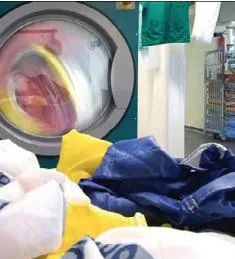Especially in high-volume operations, even a small reduction in labor or textile replacement expenses can have a significant impact on the bottom line. Radio Frequency Identification (RFID) technology can help reduce costs and streamline operations for greater efficiency.
Laundry tracking using RFID will provide significant cost savings in terms of labor and textile replacement. Therefore, by taking full advantage of the data advantages generated by RFID technology, industrial laundry suppliers can significantly reduce their total operating costs (TCO).
 In short, RFID technology has the following advantages:
In short, RFID technology has the following advantages:
- Better inventory control
- Reduced labor demand
- Optimized life cycle
- Accurate and timely billing
- Real-time traceability
- Improve customer satisfaction
We’ll describe the specific benefits of each laundry unit and industry, and take a look at some of the concepts that have proven successful with RFID products.
“The profitability of commercial and industrial laundry service providers depends on two key factors: operational efficiency and low labor costs.”
“RFID systems can extend the lifespan of textiles by 20-30% due to: Life cycle documentation.”
Hotel Laundry and RFID
In the hospitality industry,Hotel Laundry corporate services using commercial laundry often conflict with asset management. Hotels, resorts and spas are faced with the task of keeping track of the large volumes of towels and linen that are laundered each day. Many resorts spend countless hours doing inventory, which is not only time-consuming, but also labor-intensive. However, this still does little to prevent items from being lost or stolen, costing the industry millions of euros every year.
To deal with unreliable inventory levels, hotels and resorts have been forced to raise inventory levels. is the amount of inventory required to meet the minimum daily inventory customer demand. PAR inventory provides a buffer, or safety stock, in case of unexpected usage or late delivery. However, excessive PAR levels can lead to large capital expenditures and underutilized inventory. Standard inventory at resorts is about 2.5 to 3; however, many need to increase this amount and overage because they cannot trust their inventory system due to low inventory visibility. With a reliable inventory system, resorts and hotels are able to reduce PAR inventory, thereby reducing their costs significantly.
Using RFID for laundry tracking will help save a lot of labor and textile replacement, which alone can account for 75% of the total cost. Using RFID technology to track items during the commercial laundry process greatly improves inventory management, reduces losses and enables real-time asset visibility. In addition, RFID enables the automatic identification and sorting of textiles, garments and other textiles, even in bulk bags, greatly increasing the efficiency of the operational process.
“Hotel room linen costs the hospitality industry more than 1 billion euros per year.”
“The ability to track laundry items using RFID greatly improves inventory management.”
 In short, RFID technology has the following advantages:
In short, RFID technology has the following advantages:




